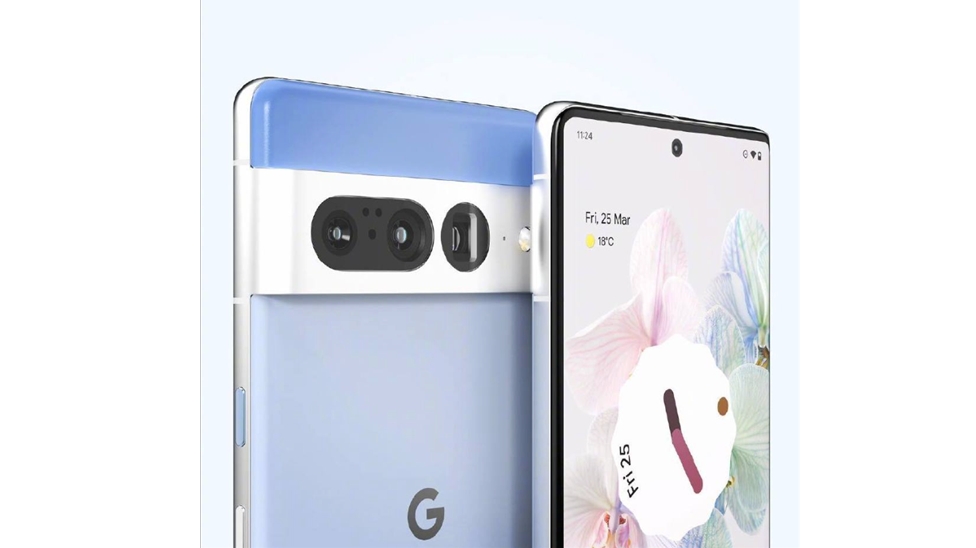The Google Pixel Fold may use old cameras and that makes sense
The Pixel 7 Ultra could be a camera beast

The long-rumored folding phone from Google, the Google Pixel Fold presumably, is now in the manufacturing stage, according to a leak spotted by our friends at PhoneArena. A tipster on the Chinese social media platform Weibo claims that Foxconn, the Chinese manufacturer and assembly plant for many top consumer electronics companies, is currently making two new Google phones. One is the Google Pixel Fold, and the other may be the Google Pixel 7 Ultra.
The leak suggests that the Google Pixel Fold may use the same cameras as the Pixel 5, something in the 12-megapixel range, as well as a 16-megapixel wide-angle camera. This may disappoint folks looking for flagship specs all around, but it won’t be surprising to those of us who have followed other foldable phone launches.
We usually think of folding phones as the height of technology, and in some cases that’s true. Folding screens were experimental prototypes only a few years ago. Today, Samsung and other manufacturers can reach a production volume of screens, so why don’t these ultra-expensive phones use the best cameras money can buy?
It's not about making the phone cheaper
You may think using old camera sensors keeps the cost down. A new Samsung Galaxy Fold 4 could cost around $1800. That’s twice what a flat ultrapremium smartphone should cost. Does shaving $100 or so off the price of the phone by adding cheap cameras make a difference? Maybe, but if manufacturers want to save money, the chipset is a better bet. That’s why you’ll see plenty of folding phone makers going with a Qualcomm Snapdragon 7-series chip instead of the Snapdragon 8 Gen 1 or better.
The real reason folding phones use older cameras has to do with development. A new camera requires new development time to tune and perfect. On a device with such a radically different design, requiring accompanying software tuning, Google will want to spend its time and resources getting the folding part right. Instead of using up time and resources developing a new camera for a new form-factor, Google will use an older camera and wait until the second or third generation to improve the Pixel Fold camera.
A new sensor means an Ultra phone
In addition to the folding phone, we finally learn more about a possible Ultraphone in Google’s Pixel lineup. The Google Pixel 7 Ultra would be a camera beast, if you believe the rumors. The leak cites a new camera sensor, a Sony IMX787 that is currently only being used on a flagship phone from ZTE under its Nubia branding.
Sony makes some of the best camera sensors on the market, and your favorite smartphone is likely using a Sony sensor. This new sensor seems to be very large, possibly a 1/1.3” diagonal. That would make the sensor three-to-four times larger than a basic 1 / 2.5” smartphone camera sensor. The sensor appears to be 50MP, and that is lower than many flagships on the market. However, the size of the entire sensor matters more than the number of pixels it contains, so a huge 50MP sensor excites us more than a small 108MP sensor.
Sign up for breaking news, reviews, opinion, top tech deals, and more.
While Google may be less concerned about the Pixel Fold's camera specs, we can surmise that the Google Pixel 7 Ultra will be all about the cameras. That's if Google is adopting a new camera sensor mid-way through the lifespan of the Pixel 7 family. I would expect few other changes to the design or features of the phone other than the camera, if Google is looking to break new ground with the sensor it uses.
The good news is that Google phones do not live in a silo, like Samsung Galaxy phones. Innovations on the Note or the Fold phones may not trickle down to the Galaxy S lineup, but with Google, we have seen innovations from the lowliest Pixel phones make their way to the best, and vice versa. Whatever Google learns from its new camera sensor, I think we’ll see that knowledge improve photos across the Pixel line.

Starting more than 20 years ago at eTown.com. Philip Berne has written for Engadget, The Verge, PC Mag, Digital Trends, Slashgear, TechRadar, AndroidCentral, and was Editor-in-Chief of the sadly-defunct infoSync. Phil holds an entirely useful M.A. in Cultural Theory from Carnegie Mellon University. He sang in numerous college a cappella groups.
Phil did a stint at Samsung Mobile, leading reviews for the PR team and writing crisis communications until he left in 2017. He worked at an Apple Store near Boston, MA, at the height of iPod popularity. Phil is certified in Google AI Essentials. His passion is the democratizing power of mobile technology. Before AI came along he was totally sure the next big thing would be something we wear on our faces.